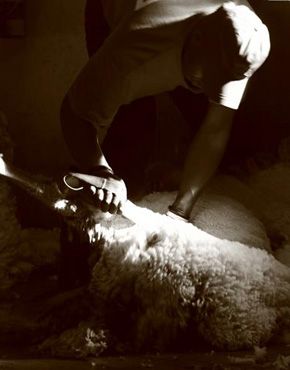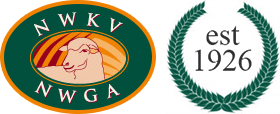
The NWGA and the Wool Industry
The National Wool Grower’s Associations of South Africa (NWGA) was founded during a Wool Conference in Middleburg on 26 May 1926 to collectively represent the wool farmers in the country and to work together to improve all aspects of the industry. Since then, the NWGA has developed into a countrywide organization, consisting of 6 Area Branches and more than 1 000 sub branches. The NWGA is a mechanism for wool farmers to have a close link with the institutions that buy and process their wool; with government programmes and policies that impact on their industry; with universities and research institutes; and with wool farmers and organisations all over the world.
The National Wool Growers Association is a national commodity structure formed by commercial and communal wool sheep farmers in South Africa with the purpose of collectively representing the wool farmers in the country and to integrate, in a single representative structure, the development requirements of the sector.
The NWGA boast a voluntary membership of approximately 20 000 of which 15 000 are black communal- and emerging farmers. Their focus is on the wool farmer, small or big and his / her interests and consequently the voice of the wool farmer is heard on numerous boards, agricultural boards, agricultural unions and committees within organised agriculture, fully representing the nation's farming community. The reputation of the NWGA is built upon the constant quality service offered to its members.
Wol: Ons Tydlose Erfenis
Deur Leon de Beer
Skaapboerdery is, volgens die geskiedenis, die mens se oudtste georganiseerde bedryf en skaapherders was die eerste beroep wat binne georganiseerde strukture gevestig is. Mnr Leon de Beer, Hoofbestuurder van die NWKV vertel vir ons dat wol die afgelope twee eeue ‘n leeue-aandeel in die vestiging en ontwikkelling van landelike ekonomieë in Suid-Afrika gehad het en ook tot die totstandkoming van ‘n kommersiële bank gelei het. Die bedryf is steeds besig om ‘n groot bydrae te lewer tot ontwikkeling, ekonomiese groei en werkskepping – iets wat bitter min kommoditeiete onder veral ekstensiewe boerdery-omstandighede kan vermag.
Hierdie kleurvolle geskiedenis van die Wolbedryf sedert die 18de eeu en die NWKV sedert 1929 in die besonder is voorwaar iets om op trots te wees, sê hy.
Lees verder aan interessante artikel. Hoofstuk 1 Hoofstuk 2.

visiting a merino farm
"THE MERINO IS THE GREATEST ANIMAL GOD EVER CREATED AND MAN DEVELOPED"
Wild Fibers Magazine, a publication who explores the world of natural fibers, visited Klipplaatsfontein in the Colesberg district in 2016 where the editor and publisher Linda Cortright met with Andries & Nora Pienaar. A delightful read where reference of the autobiography of Eve Palmer is made where she describes the Karoo as a formidable landscape and known for "great heat, great frosts, great floods and great droughts. Today, it's also known for great sheep.
Read here for the full article


